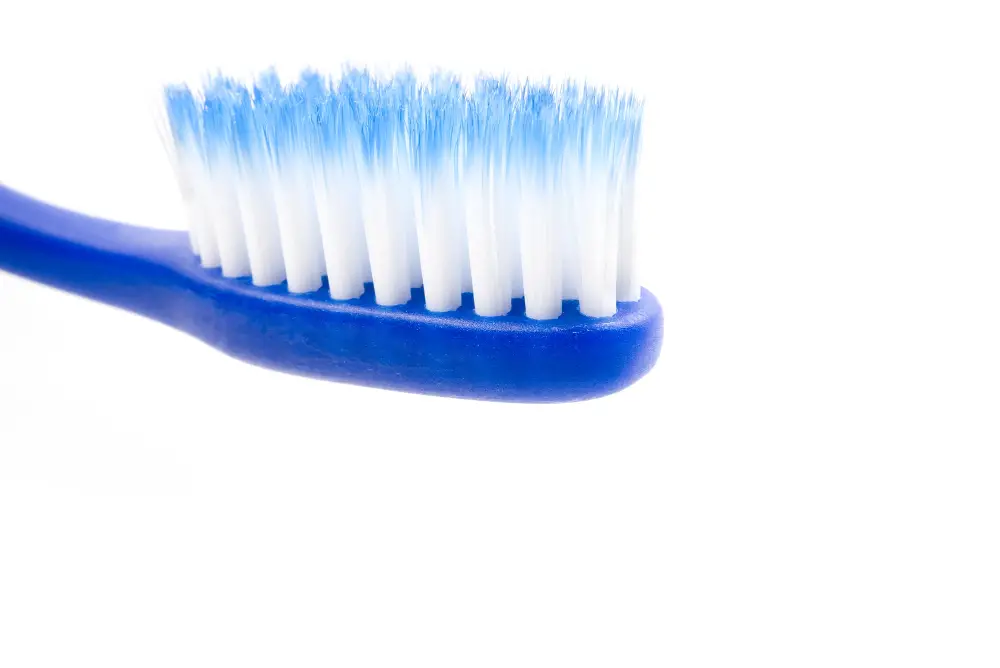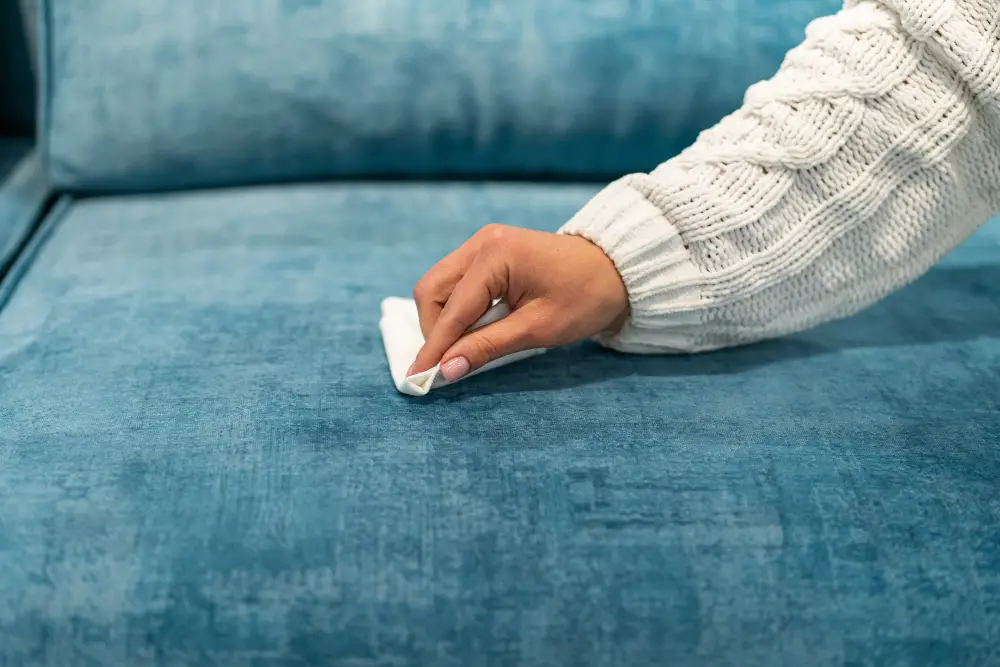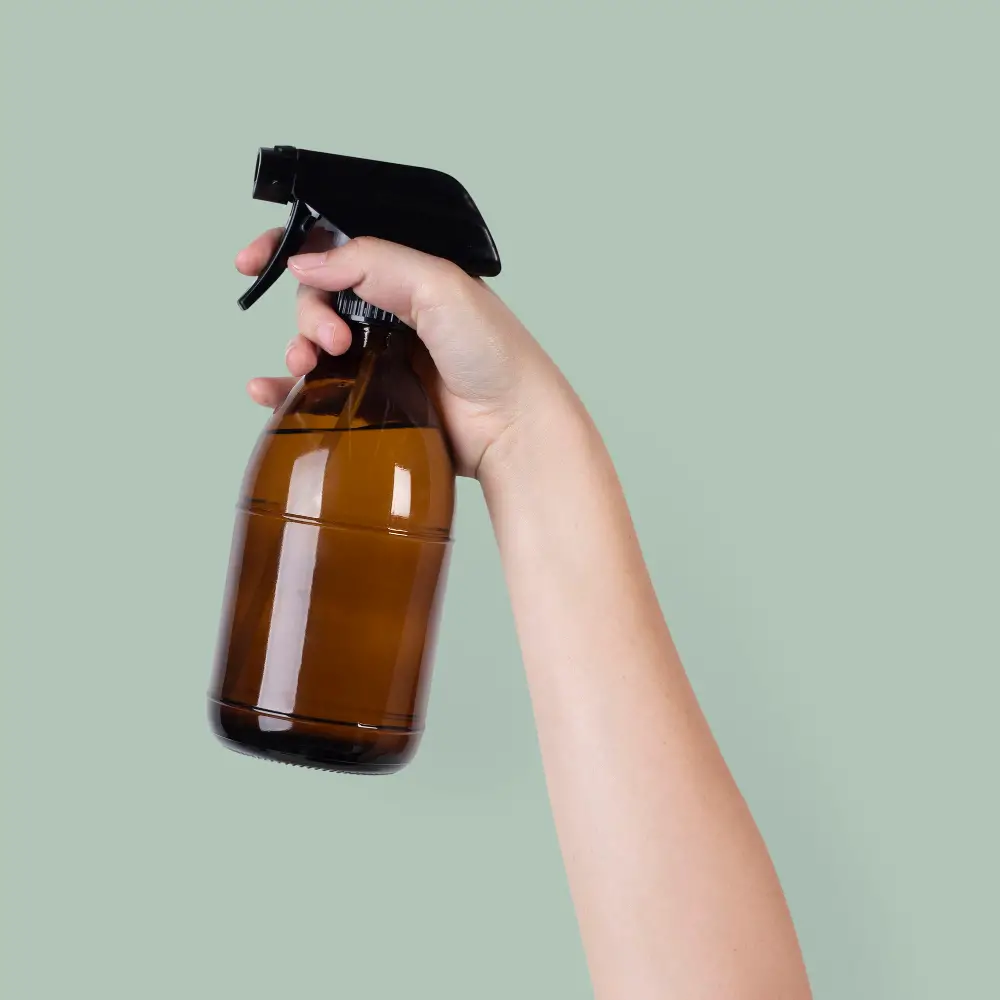Last updated on
Discover the most effective techniques for safely removing paint from your cherished leather couch, restoring its pristine appearance with ease.
Leather couches are a luxurious addition to any home decor, but accidents happen. Spilled paint on your leather couch can be a nightmare, leaving you wondering if it’s time for a new one.
But don’t worry, there are ways to remove the paint and restore your leather couch back to its former glory. In this article, we’ll explore the best methods for getting paint off your leather couch without damaging it.
So grab your cleaning supplies and let’s get started!
Table of Contents
Understanding Leather Types

Different types of leather require different cleaning methods and products. For instance, aniline or nubuck leathers are more delicate and require gentle cleaning techniques compared to pigmented or protected leathers that can withstand harsher cleaners.
To determine what type of leather your couch is made from, check for any tags attached to it that indicate its composition. If there are no tags available, try rubbing a small amount of water on a hidden area; if the water soaks in quickly without leaving any marks behind, then you have an absorbent material like aniline or nubuck.
Assessing the Paint Stain

The type of paint and how long it has been on the leather will determine which method is best for removal. If you’re dealing with wet paint, act quickly by blotting up as much of it as possible with a clean cloth or paper towel.
Avoid rubbing or scrubbing at this stage since that can spread the stain further.
If you’re dealing with dried-on paint, take note of its texture and thickness before attempting any cleaning methods. A thick layer may require more aggressive techniques than a thin one.
It’s also essential to identify what kind of leather your couch is made from since different types have varying levels of durability and sensitivity to cleaning agents. Some leathers are more prone to damage than others when exposed to certain chemicals or abrasive materials.
Gather Cleaning Materials

You’ll need a few items to effectively remove the paint without damaging your leather couch. Here are some of the essential tools you’ll need:
- Soft cloths or microfiber towels
- Leather cleaner (commercial or homemade)
- Rubbing alcohol
- Petroleum jelly
- Warm water and mild soap
Make sure that all of these materials are within reach before starting with any cleaning method as this will save you time and effort in case you have to switch between methods during cleaning.
It is important not to use harsh chemicals such as bleach, ammonia, or acetone when removing paint from a leather couch because they can cause discoloration and damage its texture permanently.
Testing a Small Area

This will help you determine if the cleaning solution or method is safe for your leather type and prevent any further damage. To do this, choose an inconspicuous spot on the couch such as under a cushion or at the back of the sofa.
Apply a small amount of cleaning solution to a soft cloth and gently rub it onto the test area in circular motions. Check for any discoloration, fading or other signs of damage after 10-15 minutes.
Dry Paint Removal

This method works best for fresh or wet paint that hasn’t had time to dry and set into the leather. To remove dry paint, you’ll need a soft-bristled brush, such as a toothbrush or an old makeup brush.
Start by gently brushing away any loose bits of dried-up paint from the surface of your couch. Be careful not to scratch or damage the leather while doing so.
Next, dampen a clean cloth with warm water and wring out any excess moisture. Use this cloth to dab at the remaining dried-up bits of pain on your couch until they start loosening up.
Wet Paint Removal

Use a clean cloth or paper towel to blot up as much of the paint as possible. Avoid rubbing or scrubbing, which can spread the stain and push it deeper into the leather fibers.
Next, mix a solution of warm water and mild soap in a bowl. Dip another clean cloth into this mixture and wring out any excess liquid until damp but not dripping wet.
Gently dab at the remaining paint stain with your dampened cloth until you see progress being made on removing it from your leather couch surface.
Repeat this process several times if necessary until all traces of wet paint are gone from your couch surface.
Removing Dried Paint With a Blunt Knife or Scraper

Be careful not to scratch or damage the leather surface while doing so. Start by gently scraping off as much of the dried paint as possible without applying too much pressure.
Next, dampen a clean cloth with warm water and place it over the remaining stain for several minutes to soften it up. Once softened, use your blunt knife or scraper again to carefully scrape away any remaining bits of paint.
Be sure not to apply too much force when using this method since excessive pressure could cause scratches on your leather couch’s surface that are difficult (if not impossible) to repair later on.
Using Commercial Leather Cleaners

These products are specifically designed for cleaning and conditioning leather furniture, making them an effective solution for removing paint stains.
Before using any commercial cleaner on your couch, it’s important to read the label carefully and follow the instructions provided. Some cleaners may contain harsh chemicals that can damage or discolor certain types of leather.
To use a commercial cleaner on your painted leather couch:
- Apply a small amount of the product onto a clean cloth.
- Gently rub the stained area in circular motions.
- Wipe away any excess cleaner with another clean cloth.
- Allow the area to dry completely before sitting or touching it again.
Natural Paint Removal Methods

One of the most effective is using vinegar and water solution. Mix equal parts of white vinegar and water in a spray bottle, then apply it directly onto the paint stain on your leather couch.
Let it sit for a few minutes before wiping off with a clean cloth.
Another natural method involves using baking soda mixed with warm water to create a paste that can be applied directly onto the paint stain on your leather couch. Leave this mixture on for about 10-15 minutes before gently scrubbing away with a soft-bristled brush or cloth.
You can also try rubbing alcohol or nail polish remover (acetone-free) as they work well in removing wet paint stains from leather surfaces without causing any damage.
Remember always to test these solutions first by applying them to an inconspicuous area of your furniture piece before proceeding further.
Cleaning Wet Paint Using Soap and Water

Here’s how to do it:
- Dampen a clean cloth or sponge in warm water.
- Add a few drops of mild dish soap to the dampened cloth or sponge.
- Gently rub the affected area with soapy cloth/sponge until all visible paint has been removed.
- Rinse out your cleaning tool and repeat steps 1-3 as necessary.
It is important not to use too much water when cleaning leather furniture, as excessive moisture can damage its texture and color over time.
Once you have finished removing all traces of paint from your leather couch using this method, dry off any excess moisture by blotting gently with a clean towel before allowing it air-dry completely at room temperature away from direct sunlight or heat sources.
Cleaning Wet Paint Using Olive Oil

Olive oil is an effective and natural way to clean the paint off of your leather without causing any damage or discoloration.
To use this method, simply apply a small amount of olive oil onto the affected area using a soft cloth. Gently rub the area in circular motions until you see that the paint has started to come off.
Be sure not to scrub too hard as this could cause further damage.
Once all of the paint has been removed, wipe away any excess olive oil with another clean cloth and allow it to air dry completely before using your couch again.
It’s important to note that while olive oil is generally safe for most types of leather, it’s always best practice first test on an inconspicuous spot before applying directly onto larger areas.
Leather Cleaning With a Soft Bristle Brush

This method is particularly useful for removing dried paint that has settled into the crevices of your leather couch.
To begin, gather all necessary cleaning materials and test the brush on an inconspicuous area to ensure it won’t damage or scratch the surface of your leather. Once you’ve confirmed that it’s safe to use, gently scrub at the affected area in circular motions until all traces of paint have been removed.
Be sure not to apply too much pressure as this could cause further damage to your leather. Afterward, wipe down any remaining residue with a clean cloth and condition as needed.
Rubbing Alcohol On Leather

Rubbing alcohol is an effective solvent that can dissolve many types of paints without damaging the leather surface.
To use this method, dampen a clean cloth with rubbing alcohol and gently rub it onto the affected area. Be sure to test a small inconspicuous area first before applying it to larger areas of your couch.
Once you’ve applied the rubbing alcohol, let it sit for several minutes before wiping away with another clean cloth. Repeat as necessary until all traces of paint are removed.
It’s important not to overuse this method or apply too much pressure when cleaning as excessive force can damage or discolor your leather furniture. Avoid using any other harsh chemicals in conjunction with rubbing alcohol as they may react negatively together causing further damage.
Cleaning Leather With Petroleum Jelly

It’s an excellent option if you don’t have any commercial leather cleaners at hand. To clean your leather couch with petroleum jelly, apply a small amount of it to the affected area and let it sit for about 10 minutes.
Then use a soft cloth to gently rub the stain until it comes off.
Afterward, wipe away any excess petroleum jelly using another clean cloth and allow the area to dry completely before conditioning your couch with some leather conditioner.
It’s important not to overuse petroleum jelly as this could cause damage or discoloration on your furniture over time. Use only enough of it needed for each cleaning session.
Use Warm Water to Get Paint Off Leather

This method is particularly useful if the paint stain is still wet or fresh. Here’s how to do it:
- Dampen a clean cloth with warm water.
- Gently blot the affected area until all excess paint has been removed.
- Repeat this process until no more color transfers onto your cloth.
It’s important not to rub too hard as this can damage the leather surface of your couch.
Once you’ve removed all visible traces of paint, use another clean damp cloth to wipe down any remaining residue on your couch before drying it off completely with a dry towel.
While using warm water may work well for small stains or spills, keep in mind that larger or older stains may require additional cleaning methods such as commercial cleaners or natural remedies like olive oil and rubbing alcohol.
Leather Conditioning

Leather conditioning helps to restore the natural oils that keep your leather soft and supple. It also protects against future stains and damage.
To condition your leather couch, choose a high-quality conditioner specifically designed for use on furniture. Apply a small amount of conditioner onto a clean cloth and rub gently into the surface of the leather in circular motions.
Be sure not to over-condition as this can lead to discoloration or greasiness on your couch’s surface. Follow manufacturer instructions carefully when applying any product onto delicate surfaces like genuine or faux-leather upholstery.
Preventing Future Stains

Here are some tips for keeping your leather furniture looking its best:
1. Avoid eating or drinking on the couch: Spills and crumbs can easily lead to stains.
2. Keep sharp objects away: Keys, pens, and other sharp objects can scratch or puncture the leather.
3. Use a protective cover: Consider using a slipcover or throw blanket over your couch when entertaining guests.
4. Clean up spills immediately: If something spills on your leather furniture, clean it up right away with a soft cloth before it has time to set in.
Professional Help Options

Leather cleaning companies have specialized equipment and products that can safely remove even the toughest stains without damaging your furniture.
When choosing a professional cleaner, make sure they have experience working with leather furniture and are familiar with different types of leather. Ask for references and read reviews before making a decision.
While hiring professionals may cost more than doing it yourself, it’s worth considering if you want to ensure that no further damage is done during the cleaning process. Plus, having experts take care of this task will save you time and effort.
Removing paint from a leather couch can seem like an impossible task at first glance but there are several methods available for tackling this issue effectively. Whether using natural remedies or commercial cleaners always test on small areas first before proceeding with larger sections of stained material.
FAQ
How do you get dried paint off a couch?
To get dried paint off a couch, use alcohol absorbed in cotton to rub the stained area or carefully scrape it with a sharp knife or similar tool.
How do you remove dried paint from faux leather?
To remove dried paint from faux leather, wet the paint with mineral spirits and gently scrape it off using a fingernail or a fingernail file.
Can paint come off of leather seats?
Yes, paint can be removed from leather seats by moistening it with nail polish remover and carefully dabbing or wiping it with a clean cloth or dry cotton swab until it is completely removed.
What is the most effective method for removing acrylic paint from a leather sofa?
The most effective method for removing acrylic paint from a leather sofa is by gently wiping the area with a mixture of warm water, mild dishwashing soap, and a few drops of white vinegar using a non-abrasive cloth.
Are there any natural or household ingredients that can safely remove paint stains from leather furniture?
Natural or household ingredients like a mixture of vinegar, water, and dish soap can safely remove paint stains from leather furniture.
How can you prevent paint damage to leather surfaces while working on a painting project at home?
To prevent paint damage to leather surfaces during a painting project, cover the leather with protective materials like plastic sheets or drop cloths.




